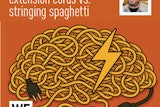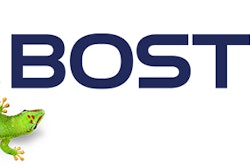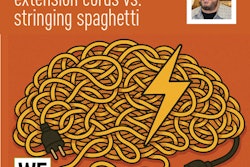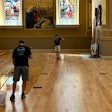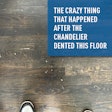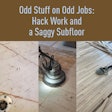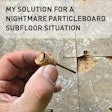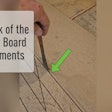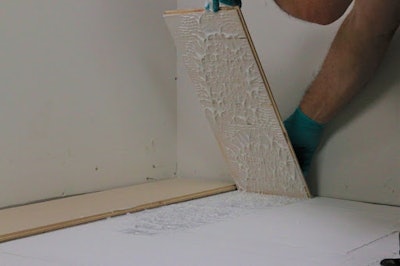
Q: How do I know I’m getting the right “coverage” for adhesive, and what about coverage rate per gallon of glue?
A: We’re often asked, “What is the right coverage for the adhesive I’m using?” Clearly, coverage of adhesive plays a critical role regarding the success of any wood floor installation. Given the cost of today’s adhesives, it can be tempting to stretch your glue as far as possible to minimize the final cost/square foot. Those efforts may cost you double.
To form a membrane that functions properly for the adhesive’s intended usage, the best possible trowel needs to be selected. A premium trowel helps achieve both substrate coverage and successful transfer to the back of the flooring. Job site conditions, profile of the substrate, depth of back channeling in the wood flooring and other factors all affect the amount of adhesive that must be applied to achieve proper coverage and transfer.
Always pull a board at the beginning of and during the installation process to confirm adequate coverage and transfer. (Trowel size may need to be changed to achieve this.) Most manufacturers require roughly 80% or more coverage of the board to the substrate for “bond-only installations.” This requisite is absolutely needed for minimizing cupping, gapping, and hollow spots.
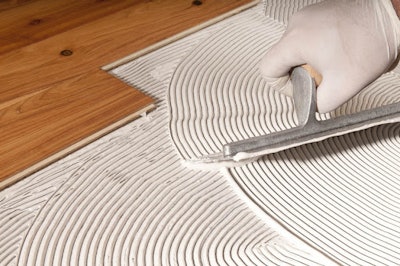 Most manufacturers offer suggested trowel sizes for the correct installation method. To maximize the spread rate of the glue and obtain proper adhesive coverage of the slab and wood flooring, use the correct trowel for your installation method.
Most manufacturers offer suggested trowel sizes for the correct installation method. To maximize the spread rate of the glue and obtain proper adhesive coverage of the slab and wood flooring, use the correct trowel for your installation method.
For adhesives that offer benefits beyond bond, such as moisture-vapor protection and sound reduction, manufacturers generally recommend 95% to 100% transfer. This is to minimize areas where moisture vapor or sound can pass through. To help achieve these transfer requirements and maximize the coverage of adhesive, installers will often find trowel suggestions on the labels or data sheets of products. These recommendations will change based on if the adhesive is being used for bond or all-in-one installations, type of wood floor that has been specified and the exact thickness of the wood floor. For bond-only, expect your coverage to result in anywhere between 35 square feet/gallon to 80 square feet/gallon. For all-in-one adhesives (those with moisture-vapor protection and sound control) trowels will generally need to be larger. Therefore, installers can expect spread rate to be anywhere from 20 square feet/gallon to 40 square feet/gallon.
At the end of the day, coverage between the substrate and transfer to the back of the wood flooring is without question the most important component. And make note of this: It doesn’t matter if you spread your glue with a large, notched trowel or a butter knife! If you ultimately achieve the required coverage for your application, this will minimize risk for callbacks and optimize the spread rate of your glue.
This blog is sponsored by Bostik. For more from them, click here.










